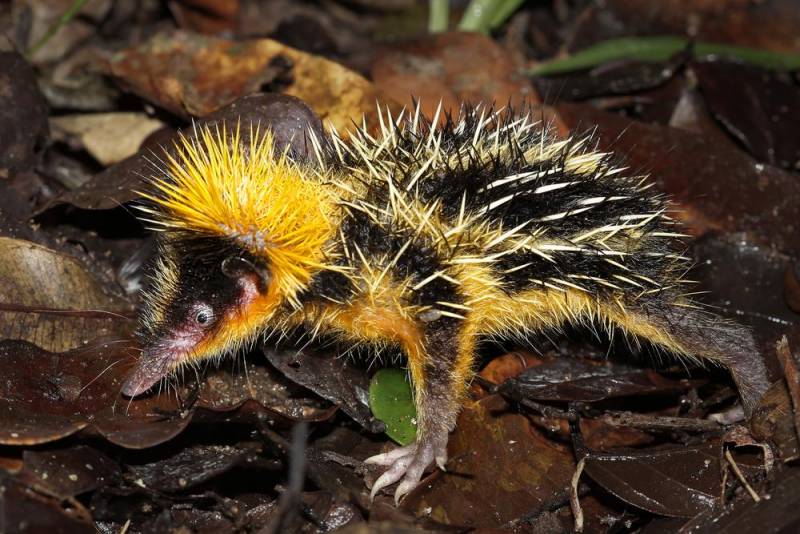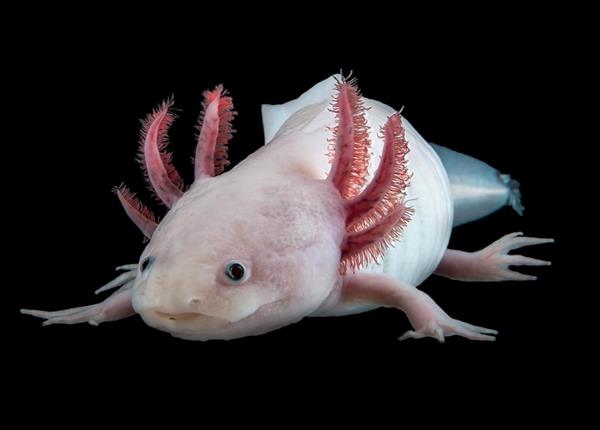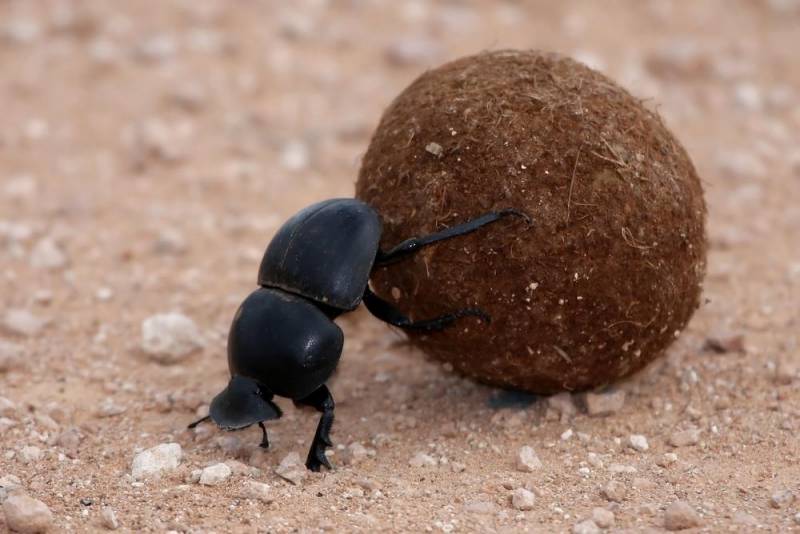Dung beetles are already world-renowned for their ability to roll a ball of excrement across great distances, but recent evidence suggests that a certain species of dung beetle (African Scarabaeus zambesianus) may be capable of another impressive skill: navigation using polarized light from the moon. These insects are often observed to travel in a straight line with their dung balls, despite whatever obstacles they may encounter. It seems that these insects rely on the patterns created when moonlight interacts with particles in the atmosphere (polarization) to navigate in a straight line. When no moonlight is available, the dung beetles tend to veer, curve or otherwise meander, making safe delivery of those poop packages much more difficult.
4. Dyeing Dart Frog
v id="attachment_5529" style="width: 810px" class="wp-caption alignnone">
animal skill – Dyeing Dart Frog
Dyeing dart frogs display the animal version of a stop sign on their backs. Their vibrant, colorful markings alert predators that the frogs are very poisonous, while Plain Jane frogs offer no such warning and are quickly gobbled up.
Scientists were stumped when they discovered that no two dart frogs look the same and that each one sports its own unique design. To them, it seemed like a more effective warning would be for each pattern to be virtually identical—that way, there’s no room for interpretation among predators.
Upon further study, scientists learned that the frogs followed two movement patterns: 64 percent of them zipped about randomly, while the remaining 36 percent preferred to move in straight lines. This offered the scientists an important clue regarding the varied markings, since it appears that the patterns are dependent on a frog’s preferred evasive tactics. This allows the frogs to fool predators by creating a type of illusion that throw of their predator. The markings also denote the speed of the frogs, since the straight-liners were found to move about three times faster than the random zippers.
5. Dol5. Dolphin
attachment_1245" style="width: 810px" class="wp-caption alignnone">
animal skill – Dolphin
The cuddly sea mammals can form all sorts of rings and bubbles—they’ve even been seen playfully whipping up small vortexes like a child creating whirlpools in the bathtub. Furthermore, dolphins often use their fins to manipulate the rings—sending them in different directions, combining them into larger rings, and even threading the needle.
This might seem like pure whimsy, but studies have shown that dolphins use these rings to hunt prey as well. They do so by swimming underneath a school of fish that they wish to eat and then blowing ring after ring until the fish either get trapped in the bubble vortex or get blown away from their school and are left alone for easy pickings.
6. Camouflag6. Camouflaged Looper
ment_5527" style="width: 810px" class="wp-caption alignnone">
animal skill – Camouflaged Looper
Many animals use camouflage to avoid detection by predators or to ambush lesser creatures that will hopefully become lunch. But the Synchlora aerate or camouflaged looper puts most of them to shame by creating crazy “costumes” on the fly, allowing concealment in a variety of settings. It does this by adorning itself with leaves, flowers, branches, and whatever else it tears off while scavenging for tasty plants. Thanks to this dynamic camouflage, the looper never looks out of place and so remains perfectly hidden. And the looper takes it a step farther, displaying an unnatural swaying gait while in hiding. You’d think sudden herky-jerky movements would draw predators’ attention, but the looper’s no dummy it further consolidates the illusion by imitating a piece of vegetation blowing in the wind.
7. Lowland Streaked Te7. Lowland Streaked Tenrec
style="width: 810px" class="wp-caption alignnone">
animal skill – Lowland Streaked Tenrec
The lowland streaked tenrec found only on the Eastern coast of Madagascar resembles less a rodent and more a spiny little bumblebee. Its spines can be used with adorably lethal force, as the tenrec is known to attack enemies with a spiky headbutt.
Oddly enough, these spikes can also be used to communicate through a method known as stridulation, which is a noise made via the rubbing of body parts. When crickets keep you up at night by rubbing their legs together to produce an incessant chirping noise, that’s stridulation. This is a common behavior among insects, but has never before been displayed by mammals, until now.
8. Axolotl
8. Axolotltyle="width: 810px" class="wp-caption alignnone">

animal skill – Axolotl – arstechnica.com
When one of these creatures is damaged (cut, or having a limb torn off), coagulation begins immediately – and new cells start to develop. In the case of a missing limb, a layer of skin cells begins to form from the cells at the location of the trauma. Following this, new tissues begin to grow: the axolotl is remarkable for its ability to generate new blood vessels, sinews, muscle, bone and even nerves. The same regeneration occurs with non-vital organs, and even parts of the brain. It’s for these amazing healing abilities that the axolotl is commonly studied in laboratories around the world, which are hoping to someday pass on these traits to human beings.








Leave a Reply